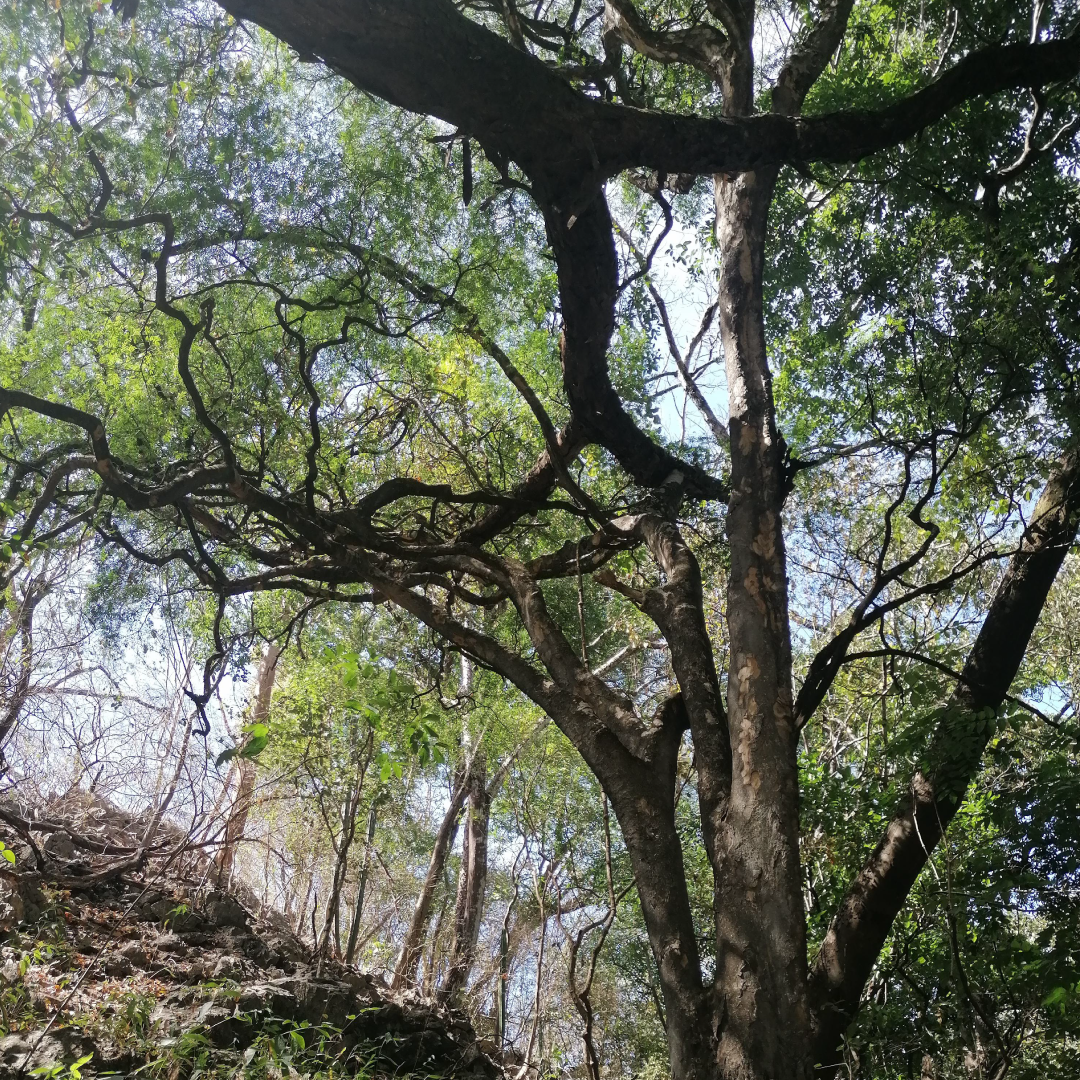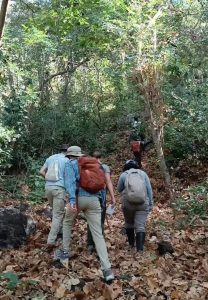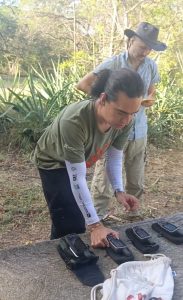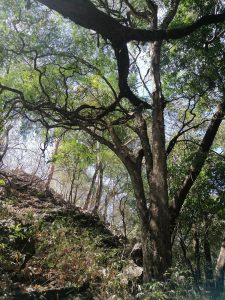Beyond Endangered: A New Look at the “Guayacán Real”
By Orlando Jimenez. GIS OTS team.
Some trees are impossible to overlook—not because of their size or color, but because of the feeling they leave behind.
During a walk with undergraduate students—part of a basic GIS workshop—we encountered one of those unforgettable trees. With a trunk over 60 centimeters in diameter, its dense, twisted form seemed to carry the weight of centuries. According to local foresters, this Guayacán real (Guaiacum sanctum) could be more than 500 years old. It may have already been standing when the first European ships reached the shores of Central America. Not as a monument to colonization, but as a quiet testament to the forest’s enduring presence.
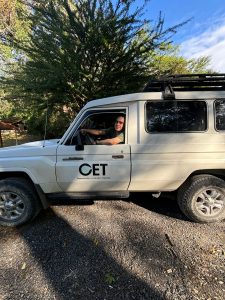
The walk was part of a hands-on GPS activity. Our task was simple: identify Guayacán trees along the trail, mark their locations with waypoints, and assign each a size class. Before setting out, I estimated that—with luck—we might find 100 individuals. But the forest surprised us: along just 1.5 kilometers, we recorded more than 400 trees. An extraordinary density for a species considered endangered.
Guaiacum sanctum grows exclusively in tropical dry forest, an ecosystem that covers only about 10% of Costa Rica. Its wood is among the densest—and most valuable—in the world. This desirability led to its overexploitation, and today, the species is protected under CITES and national bans on harvesting. In most places, finding even a single tree is rare. But here, in Palo Verde, we were surrounded by them.
And then we saw it—the giant. A massive individual, likely the mother of many others we had recorded. Towering quietly, never demanding attention, yet impossible to ignore. Around it, students gathered, took coordinates, scribbled notes. And though no one said it out loud, I believe many of them received a lesson not listed in the workshop syllabus: every GPS point represents a living story—a life worth noticing, understanding, and protecting.
Palo Verde National Park is well known for its birds—and rightly so. But there are other lives in its landscapes, quieter ones, just as valuable. Along its trails grow stories of resilience, like that of the Guayacán, inviting us to slow down and look more closely.
Because in the shadow of time, the forest speaks. And if we listen carefully, we just might hear it.
This discovery is a powerful reminder of how field-based GIS education at OTS goes beyond maps and data—it reveals hidden narratives etched into the landscape. Want to learn more or get services from us? Contact ots.gis@tropicalstudies.org

